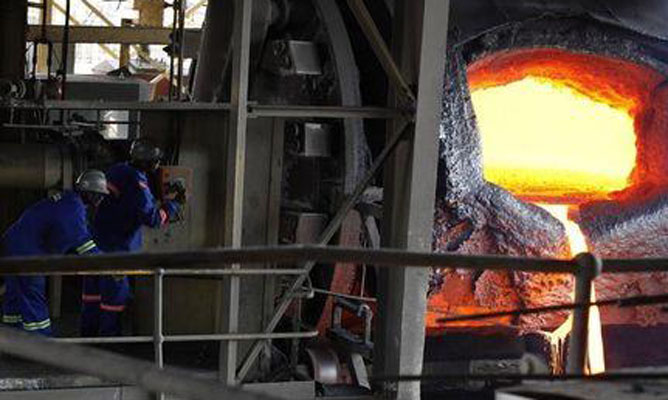
The cost of constructing the mothballed Selous Metallurgical Complex Base Metal Refinery near Chegutu has shot up by over 30% to $131 million due to costs related to a pre-feasibility study, Zimplats has said.
BY NUNURAI JENA
Initially the platinum producer had estimated the cost at $100 million.
Despite the upward review of the project, Zimplats head of corporate affairs Busi Chindove said work was already in progress with the commissioning of the project scheduled for July 2016.
Chindove said Zimplats made a decision to refurbish and commission the mothballed Selous Metallurgical Complex Base Metal Refinery in line with government’s thrust on beneficiation.
“At the beginning of 2014 Zimplats commissioned a Pre-Feasibility Study (PFS). The PFS was concluded in April 2014. Based on the results of the PFS, the company embarked on a Bankable Feasibility Study (BFS) in September 2014. On the back of information thus far from the PFS, the Zimplats Board approved commencement of the project” said Chindove.
In order to facilitate the speedy completion of the project Chindove said the final design of engineering plans was underway and orders for procurement of long lead items were placed in November 2014 with delivery due in October 2015.
Government is pushing miners to value-add minerals to generate more revenue for the economy. Mineral shipment accounts for over 50% of the country’s exports and government believes beneficiation would generate more for the economy and stave off the liquidity crunch.
- Chamisa under fire over US$120K donation
- Mavhunga puts DeMbare into Chibuku quarterfinals
- Pension funds bet on Cabora Bassa oilfields
- Councils defy govt fire tender directive
Keep Reading
Chindove said the redevelopment of Bimha Mine was progressing well with completion expected in 2018.
Bimha Mine was closed as a precautionary measure to safeguard employees and assets in August 2014 following a ground collapse covering about 50% of the underground footprint.
Chindove said investigations and studies by internal and external experts were undertaken to fully understand the root cause of the ground collapse and establish the structural geological setting at Ngezi. Following a detailed risk assessment, the Board approved the new design and redevelopment of Bimha Mine commenced in December 2014.
“Two mining fleets (comprising about 280 employees) were deployed to re-establish reef access at Bimha. No significant further ground movements have been observed and management continues to closely monitor the situation. Despite the challenging ground conditions intersected in parts of the footprint, work has progressed very well with ramp-up to full production expected by April 2018,” said Chindove.
Global use for platinum is becoming more diverse and is used in the automotive, industrial, jewellery industries and investment. According to World Platinum Investment Council, platinum demand from auto catalysts has equated to between 37% and 41% of total demand in the last five years.
Platinum’s diverse other industrial uses account, on average, for a little under 20% of total global demand (five-year average).
Over the same period, global annual jewellery demand has averaged 34% of total platinum demand.
Investment is the smallest category of platinum demand and also the most variable over the past five years, ranging between 2% and 11% of total demand.











